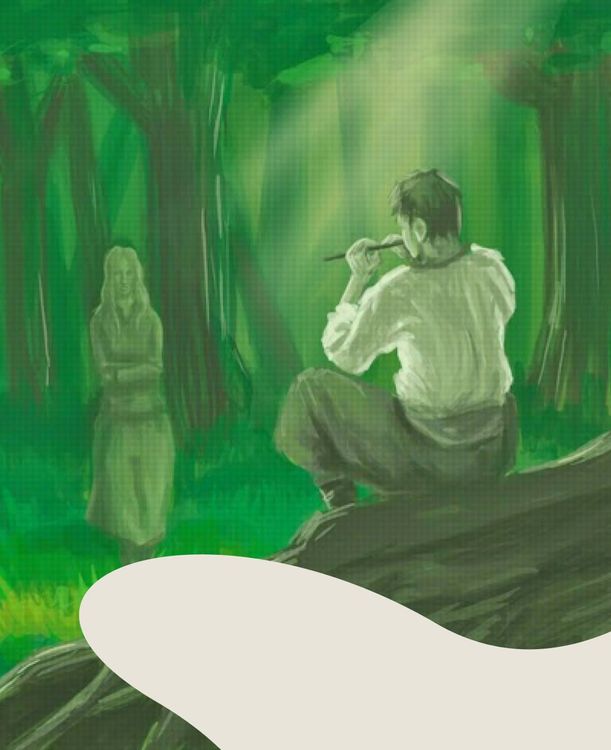“Shchedryk” (The Little Swallow)

A musical piece by composer Mykola Leontovych, which became Ukraine’s entry ticket into the international cultural diplomacy.
1901-1902
Fonts:
Ruthenia (Regular)
Designers:
Can a song be empowering? This is how people often describe Mykola Leontovych’s composition “Shchedryk.”
In 1919, the Ukrainian Republic Capella went on a foreign tour with this carol to acquaint the world with the newly formed Ukraine. The choir received standing ovations in Europe and America, newspapers enthusiastically wrote about the Capella, and the piece’s composer along with the conductor Oleksandr Koshyts were recognized as geniuses. Then, the song fell into obscurity, the musicians were forgotten, and “Shchedryk” was lost for a entire century...
Mykola Leontovych is often referred to as a perfectionist, who sought to bring each of his works to perfection. This was also the case with “Shchedryk,” which he reworked as many as five times. Therefore, it was only in 1916 that the choir of Kyiv University sang the carol for the first time. This carol made the composer’s name known in musical circles.
A naive ritual song had become a complete and majestic piece of work in his hands.
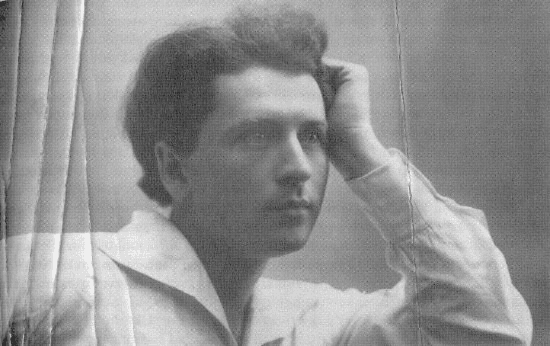
However, “Shchedryk” owes its fame not only to Leontovych.
Oleksandr Koshyts was the person who introduced the world to the Ukrainian song. It happened in 1919, when his choir went on tour at the request of Symon Petliura. Petliura was well aware of the importance of cultural diplomacy, so he sent a team to represent Ukraine on the world stage. And he was not mistaken.
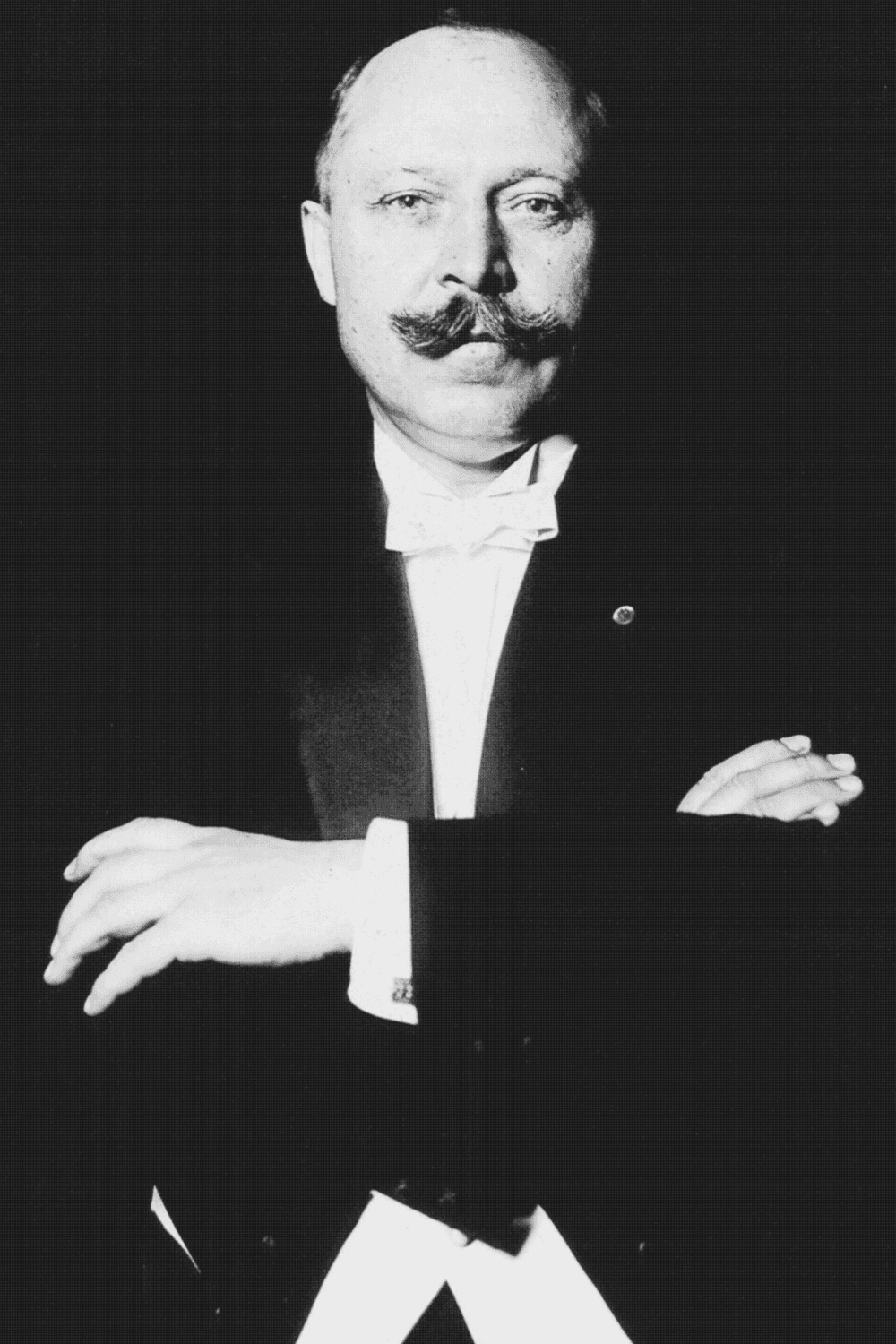
Over the next two years, the choir performed triumphantly in 45 cities of Western Europe, including key European capitals. Its repertoire consisted of arrangements of the Ukrainian folk songs, and “Shchedryk” became an unequivocal hit. On October 5, 1922, the Ukrainian Republic Capella made its debut in America. This performance was special since the group sang on the stage of New York’s Carnegie Hall.
The audience received it very warmly, and here is what The Sun newspaper wrote about the concert:
"It was a warm time of cordiality and enthusiasm that heated up the thermometer to a boiling point and explosion. In cheerful carols like ‘Shchedryk,’ the women’s voices sounded high, elegant and natural... Flowers poured onto the stage... The audience supported the choir with a standing ovation. ‘Shchedryk’ had to be repeated.”
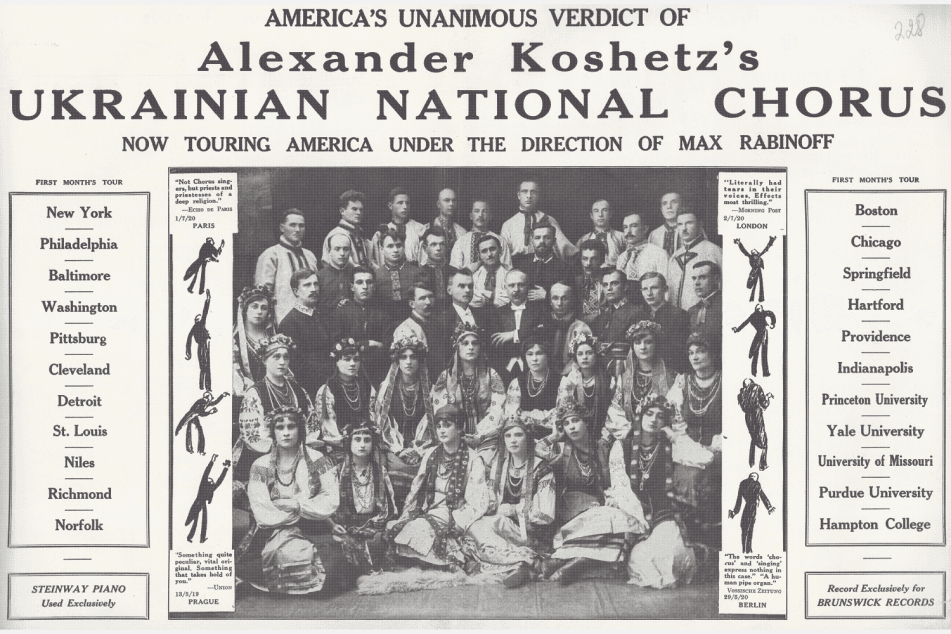
Unfortunately, the Ukrainian fight for independence had already failed at that time. The Bolsheviks seized the territory, and the government of the Ukrainian People’s Republic had to leave the country. The heroes of our story suffered a tragic fate. Mykola Leontovych was murdered by Chekists in 1921, Symon Petliura was assasinated by the Soviet regime in Paris in 1926, and Oleksandr Koshyts never returned to Ukraine for the rest of his life.
The names of the prominent musicians were strictly prohibited for decades.
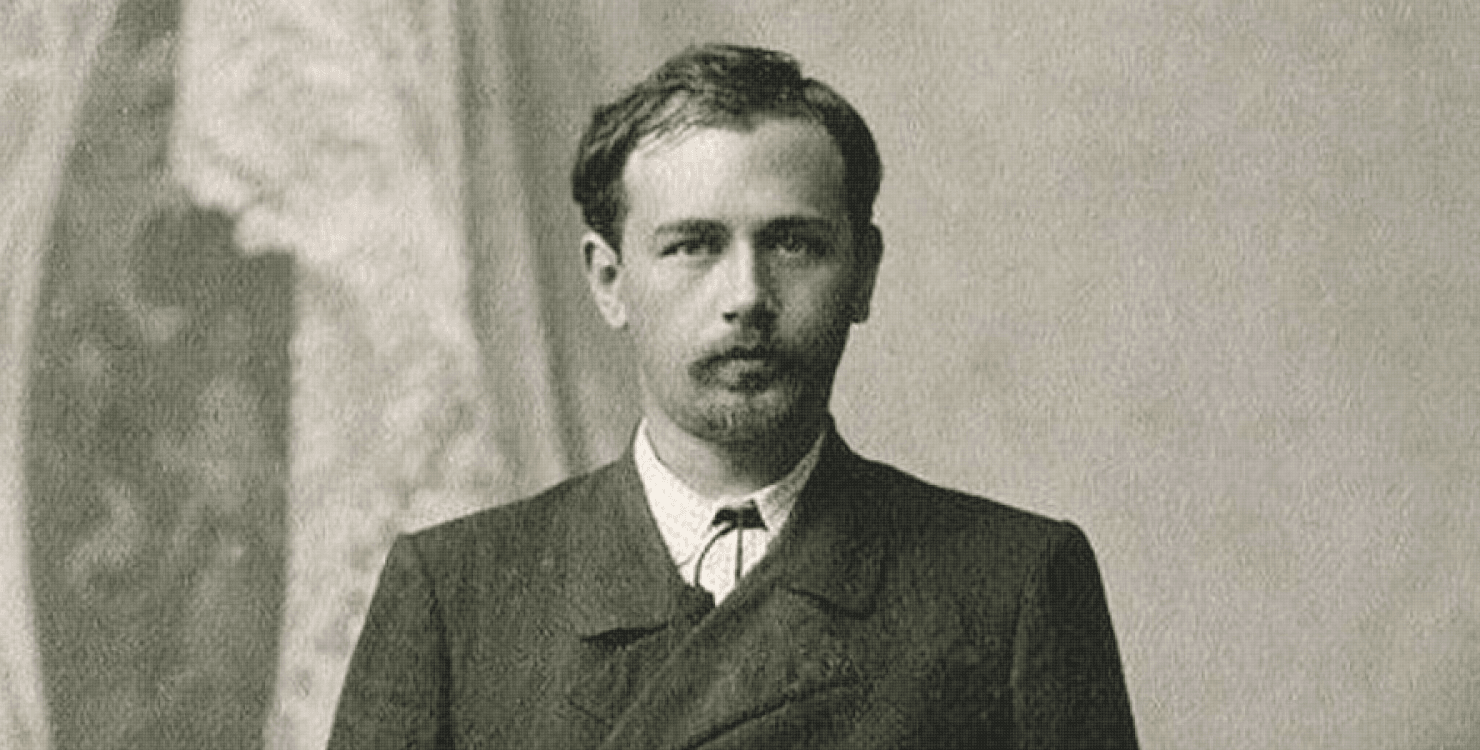
However, “Shchedryk” was performed internationally all this time — but not in Ukrainian. The carol had become so popular that it was translated into many languages of the world.
In 1936, American composer of Ukrainian origin Peter Wilhovsky created an English version of it, now known as “Carol of the Bells,” for the NBC Symphony Orchestra. It is in this version that the Ukrainian “Shchedryk” is performed yearly for Christmas all around the world.
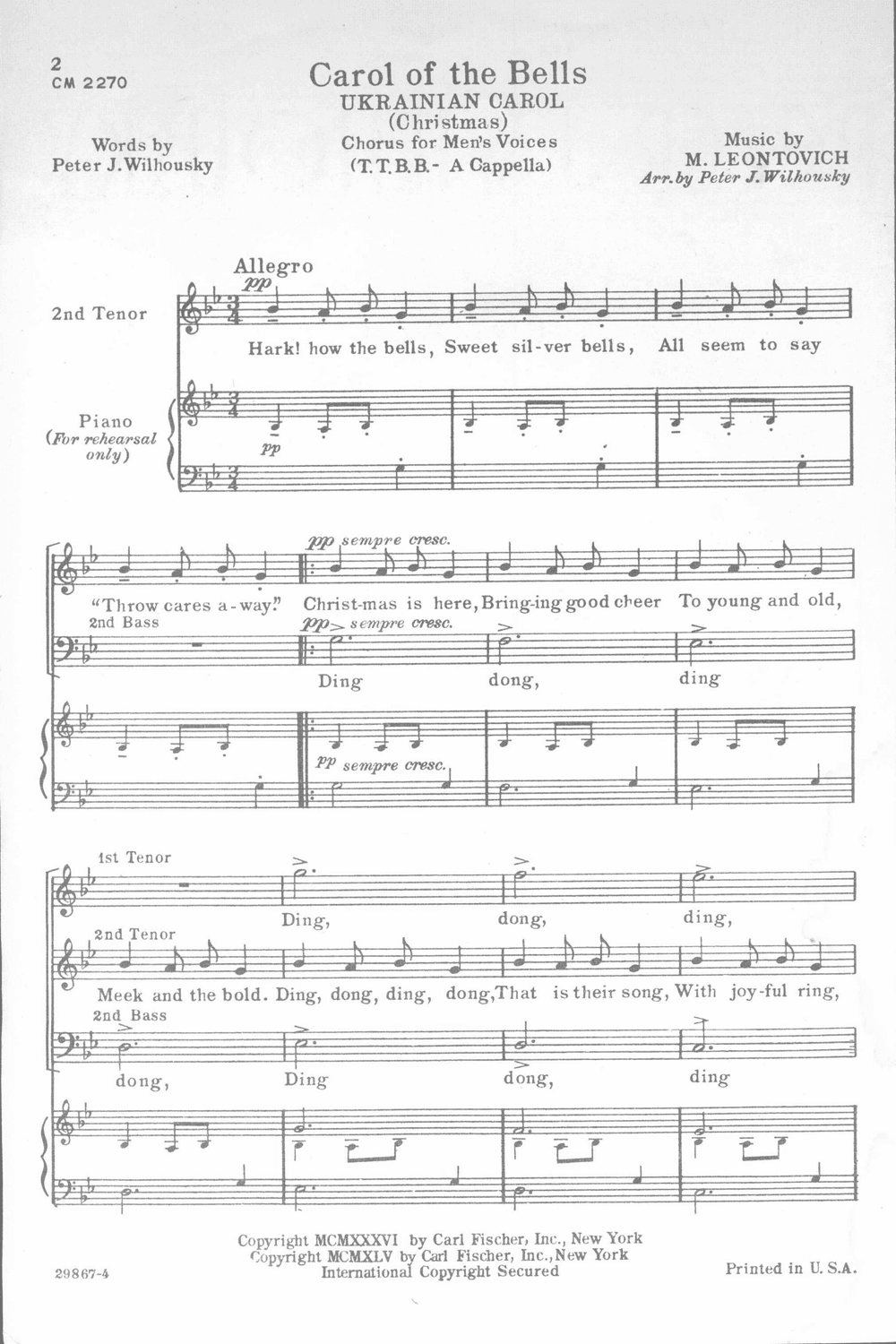
More than a century has passed since “Shchedryk” was created, but the story behind it is as relevant as ever. After many years of Soviet occupation, Ukraine was able to gain independence, but today the country has to defend it again. Once again, the Ukrainians prove to everyone that they have their own identity and culture. Meanwhile, “Shchedryk” continues its diplomatic mission and connects them with the world.
Well, in that sense, a song can be empowering indeed.
Fonts:
Ruthenia (Regular)
Details:
“Shchedryk” (The Little Swallow)
Designers:
About font:
Next letter and event

“Shchedryk” (The Little Swallow)
this project
in social
“Shchedryk” (The Little Swallow)

“Yak umru to pokhovaite...” (When I am dead, bury me...)

Yizhak protytankovyi (Czech hedgehog)

Chornobyl Disaster

Ivan Franko


Falz-Fein and his “Askania Nova”

“Yak umru to pokhovaite...” (When I am dead, bury me...)

Antonov AN-225 Mriya ("The Dream")

Budynok “Slovo” (The Slovo Building, or "The Word")

Zaporizka Sich (The Zaporizhian Host)

Zaporizka Sich (The Zaporizhian Host)


“Nasha armiia, nashi khranyteli” (“Our Army, Our Guardians”)
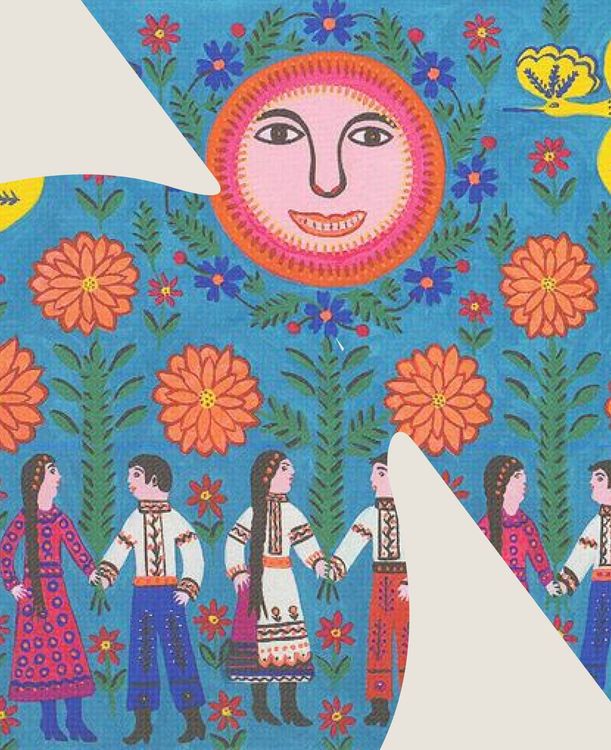

Danylo Halytskyi

Crimean Tatars, Karaites and Krymchaks (qırımlılar, qaraylar)

Georgiy Gongadze

Creative & Tech Online Institute
Медіа про дизайн, креатив і тех індустрії

Ukrainski sichovi striltsi (The Ukrainian Sich Riflemen, or the USS)

Mariupol

Antonov AN-225 Mriya ("The Dream")


Aeneid by Ivan Kotliarevsky
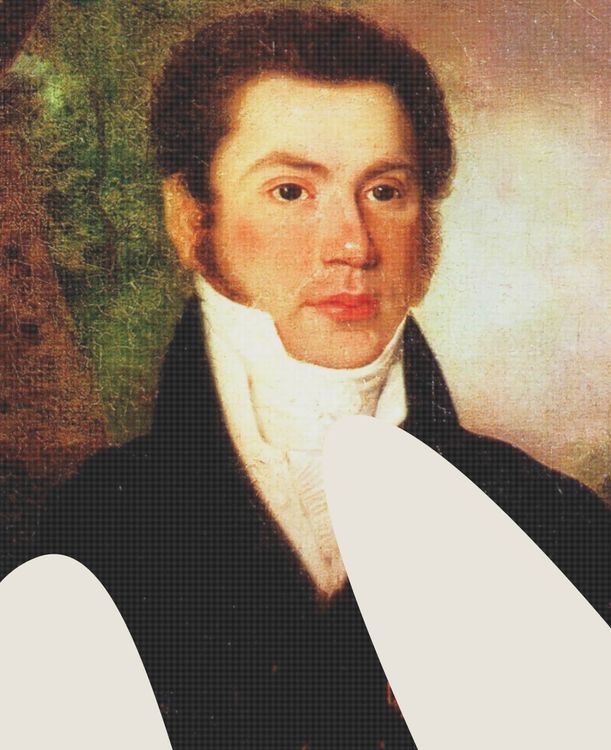
Volia — collective concept, most often translated as Freedom

Holodomor


The Trident of Volodymyr the Great

Khreshchenia Rusi (Christianization of Kyivan Rus’)

Orlyk’s Constitution

Antonov AN-225 Mriya ("The Dream")

Peresopnytske Yevanheliie (The Peresopnytsia Gospel)


The Trident of Volodymyr the Great

Yrii (/'irij/: iriy), yndyk (/in'dik/: turkey) and yrod (/'irod/: Herod)


Danylo Halytskyi

“Smilyvi zavzhdy maiut shchastia” (“The brave always have happiness”)



